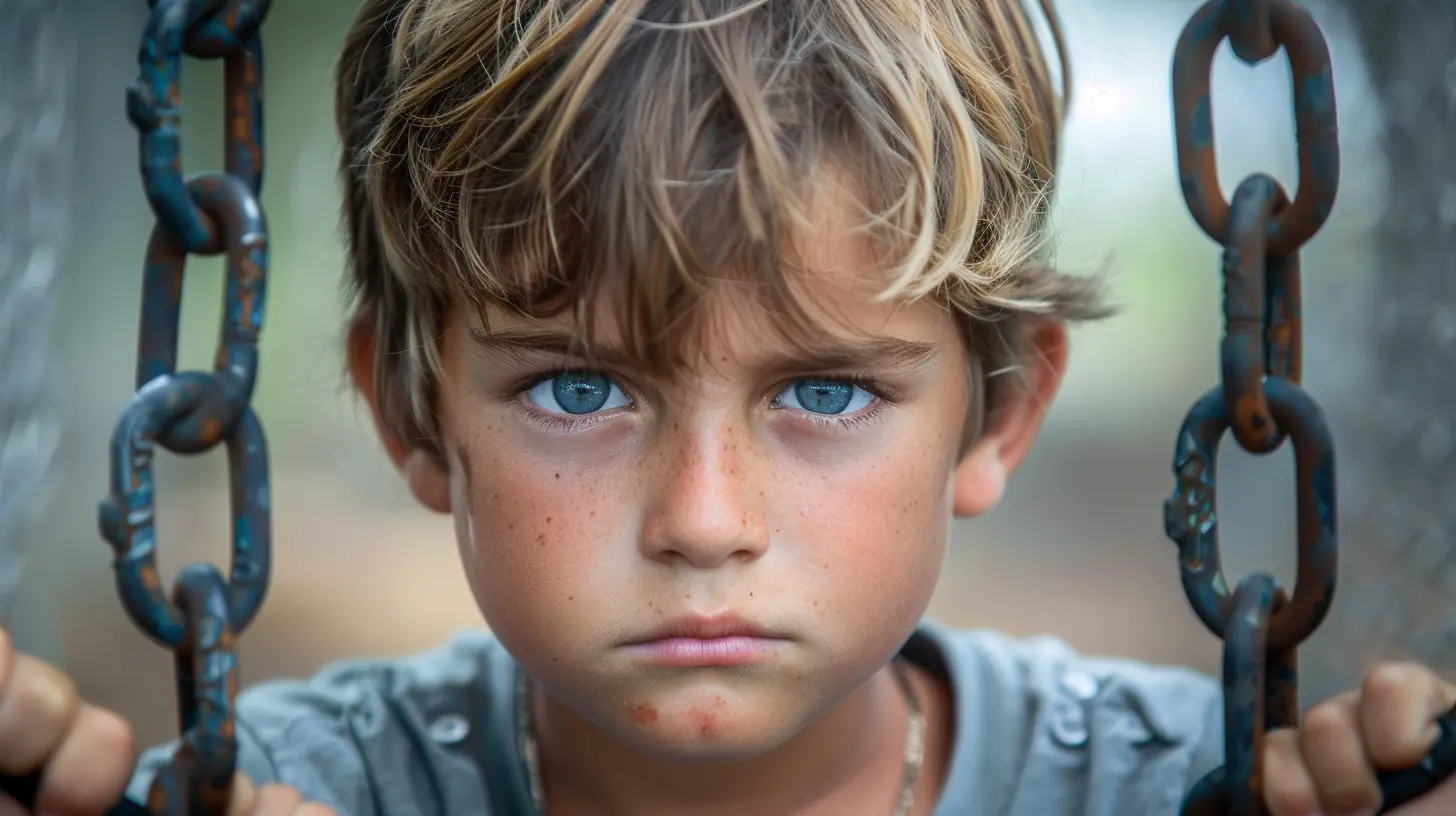Disciplining With Love: Establishing Boundaries Without Guilt
28 July 2025
Parenting is this wild, beautiful ride full of unpredictable moments, deep emotions, and let’s be honest—a boatload of tough decisions. One of the trickiest parts? Discipline. But not just any discipline—disciplining with love. That fine balance between setting firm boundaries and keeping your relationship with your child healthy, trusting, and judgment-free. Sounds like a tightrope act, right?
Well, here’s the good news: You don’t have to choose between being the “strict parent” and the “warm parent.” With the right approach, you can have both. You can discipline with love and without guilt. And this article is going to unpack just how to make that magic happen.

Why Discipline Matters (And Why It’s Not A Dirty Word)
When people hear “discipline,” they sometimes immediately think of punishment, yelling, or some kind of power struggle. Totally understandable—but that’s not what we’re talking about here.Discipline, at its core, is about teaching. It’s guiding your child toward behaviors that will serve them well in life—responsibility, respect, empathy, and self-control. Think of discipline as the GPS system for your child. You're not bossing them around; you're helping them find the right path.
But here’s the kicker: To be effective, discipline needs to be rooted in love. Not fear. Not guilt. Not shame.

The Problem With Guilt-Based Parenting
Let’s talk about guilt. It creeps in when we set a consequence and our kid gives us “the look.” You know the one—puppy dog eyes, maybe a tear or two, and that little voice that whispers, “You’re being too hard on them.”Sound familiar?
We’ve all been there. The fear of damaging the relationship, of being “too strict,” or somehow ruining their self-esteem often gets in the way of strong yet loving parenting. So we cave. We let things slide. And then, discipline loses its power—and our frustration builds.
But guilt isn't a reliable parenting compass. It’s emotionally charged and reactionary. Love, however—that’s the golden standard.

What Does It Mean To Discipline With Love?
Disciplining with love means setting clear, consistent boundaries while still validating your child's emotions and showing respect. It's about parenting from a place of connection, not control.So, what does that look like in real life?
Imagine your child throws a tantrum in the grocery store. The loving response isn't to bribe them with candy or snap in anger. It's kneeling to their level, acknowledging their frustration, and calmly stating, “I understand you’re upset, but screaming isn’t okay. When you’re calm, we’ll talk.”
Boom. Boundaries + empathy = love-based discipline.

The Benefits of Loving Discipline
Before we dive into the how-to, let’s talk about why this style of parenting is so worth it.- Builds Trust: Your child knows you’re in their corner, even when they mess up.
- Promotes Emotional Health: They learn to manage feelings rather than suppress or explode.
- Encourages Independence: With clear limits, kids feel safe enough to make choices.
- Reduces Resentment: You’re not the “bad guy”; you’re the guide.
- Improves Long-Term Behavior: Kids internalize values rather than obey out of fear.
It's like planting a garden—you don't yell at the seeds to grow. You water them, give them sunlight, and guide them upward with support.
Step-By-Step: How To Set Boundaries Without The Guilt Trip
Now that we’ve laid the groundwork, let’s get practical. Here’s how you can discipline with love, even when your kid pushes all your buttons.1. Start With Connection
Connection is the foundation. Before kids will listen, they need to feel seen and heard.Try this: Before correcting behavior, squat to your child’s level, make eye contact, and use a calm voice. A simple, “I see you're upset. Let’s work through this together,” can do wonders.
When they feel emotionally safe, they’re far more likely to cooperate.
2. Get Crystal Clear On Your Boundaries
Inconsistencies confuse kids. One day jumping on the couch is hilarious, the next it’s a punishable offense? That’s a recipe for frustration.Decide in advance what the non-negotiables are. For example:
- No hitting or hurting others
- Respectful language only
- Bedtime rules stay firm
Make the boundaries known—gently but clearly.
3. Use Natural Consequences
Forget the long lectures. Let life do the teaching when it's safe to do so.If your child refuses to wear a coat, let them feel chilly (within reason). If they forget their homework, let them face the teacher. Natural consequences are powerful teachers—and you're just the guide on the side, not the enforcer with a gavel.
4. Be Firm, Not Harsh
There’s a big difference between being firm and being mean.Firm: “You need to clean up your toys before bedtime.”
Harsh: “You never listen! Clean up or no dinner!”
See the tone difference? Firmness sets limits while preserving dignity—for both of you.
5. Label The Behavior, Not The Child
Watch your wording. Your child is not “bad” or “rude.” Their behavior may be unacceptable, but their identity isn’t. Say, “Throwing your toys isn’t okay,” instead of “Why are you so naughty?”This protects their self-image while still addressing the issue.
6. Stay Curious, Not Furious
When your child acts out, get curious. Ask yourself, “What is this behavior trying to tell me?”Are they tired? Hungry? Feeling disconnected?
Misbehavior is often a signal, not a challenge. When we shift from reacting to understanding, we correct the root, not just the symptom.
7. Follow Through Consistently
Nothing undermines discipline like inconsistency. If the rule today doesn’t apply tomorrow, your child won’t take it seriously.Enforce consequences calmly and predictably. It's not about being a rigid robot; it’s about showing that your word is solid.
8. Keep Communication Open
After the consequence, reconnect. Explain why the boundary was important. Ask how they felt. Affirm your love.You want your child to grow up knowing:
- Mistakes are learning moments
- Your love isn’t conditional
- Growth matters more than perfection
When Discipline Makes You Feel Like The “Bad Guy”
Let’s be real—sometimes it stings. Setting limits can feel like you’re hurting your child instead of helping them. But don’t let those feelings fool you.Remember: You’re not raising a roommate. You’re raising a future adult. That means teaching them the skills to thrive in the real world. And that job isn’t always about popularity points—it’s about long-term love and guidance.
So next time you feel the guilt creeping in, ask yourself:
- Am I being respectful?
- Have I stayed connected?
- Is this boundary coming from love or fear?
If the answer is love, you're on the right track.
Emotional Safety: The Secret Sauce
Kids don’t remember every consequence, but they do remember how they felt around you. Emotional safety—that sense of being accepted, even when they mess up—is the cornerstone of respectful discipline.So keep the tone warm. Offer hugs after hard conversations. Use kind words, even when you’re correcting. These little things teach your child that love doesn’t disappear when things go wrong.
How To Handle Pushback Like A Pro
Spoiler alert: Kids will test your boundaries. Again. And again. It’s literally their job. They’re hardwired to explore, challenge, and question limits—that’s how they learn.So expect pushback and don’t panic. Your calm consistency is more powerful than any tantrum or backtalk.
Quick tips for handling resistance:
- Stay neutral: Don’t take it personally.
- Repeat yourself calmly: “I hear you. Screen time’s still over.”
- Offer choices within boundaries: “You can do homework now or after your snack.”
Progress, Not Perfection
Look, no parent gets it right 100% of the time. You’ll raise your voice when you meant to stay calm. You’ll second-guess a consequence. That’s okay. Show yourself grace.What matters most isn’t perfection—it’s the effort to connect, to grow alongside your child, and to lead with love.
Your child doesn’t need a flawless parent. They need a present, loving one. And that’s exactly what you’re becoming.
Final Thoughts
Disciplining with love isn’t a myth. It’s a mindset shift—and it’s absolutely doable.It starts with connection, clarity, and a conscious decision to lead with empathy rather than authority. When we ditch the guilt and discipline from a place of love, we raise not just well-behaved kids—but emotionally healthy, resilient, and respectful humans.
So go ahead and set those boundaries. Stand firm in your love. Your child’s future self will thank you—and honestly, so will you.
all images in this post were generated using AI tools
Category:
Parenting ChallengesAuthor:

Max Shaffer
Discussion
rate this article
2 comments
Leslie Wilkins
Disciplining with love is essential for healthy parenting. Establishing clear boundaries helps kids understand expectations while reinforcing that they are valued. It’s okay to be firm—guilt shouldn’t overshadow the importance of guiding our children toward responsible behavior and decision-making.
November 23, 2025 at 3:24 AM

Max Shaffer
Thank you for emphasizing the importance of love and clear boundaries in parenting. Striking that balance helps children thrive while fostering mutual respect and understanding.
Tamara Johnson
This article brilliantly highlights the balance between setting boundaries and nurturing our children. Disciplining with love fosters respect and understanding, proving that discipline doesn’t have to equate to guilt. A must-read for all parents!
August 9, 2025 at 5:05 AM

Max Shaffer
Thank you for your kind words! I'm glad you found the article helpful in navigating the balance of discipline and love.


